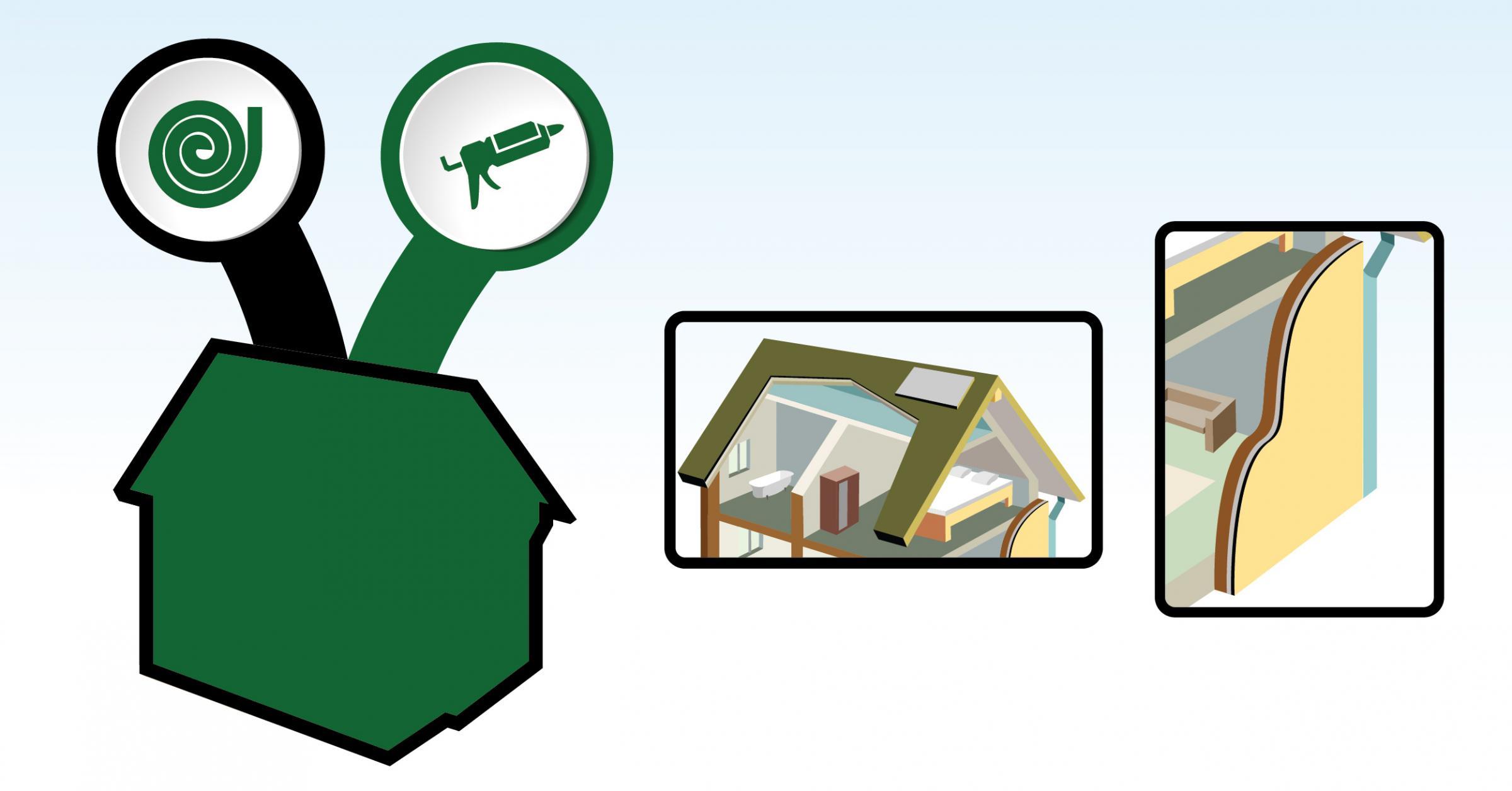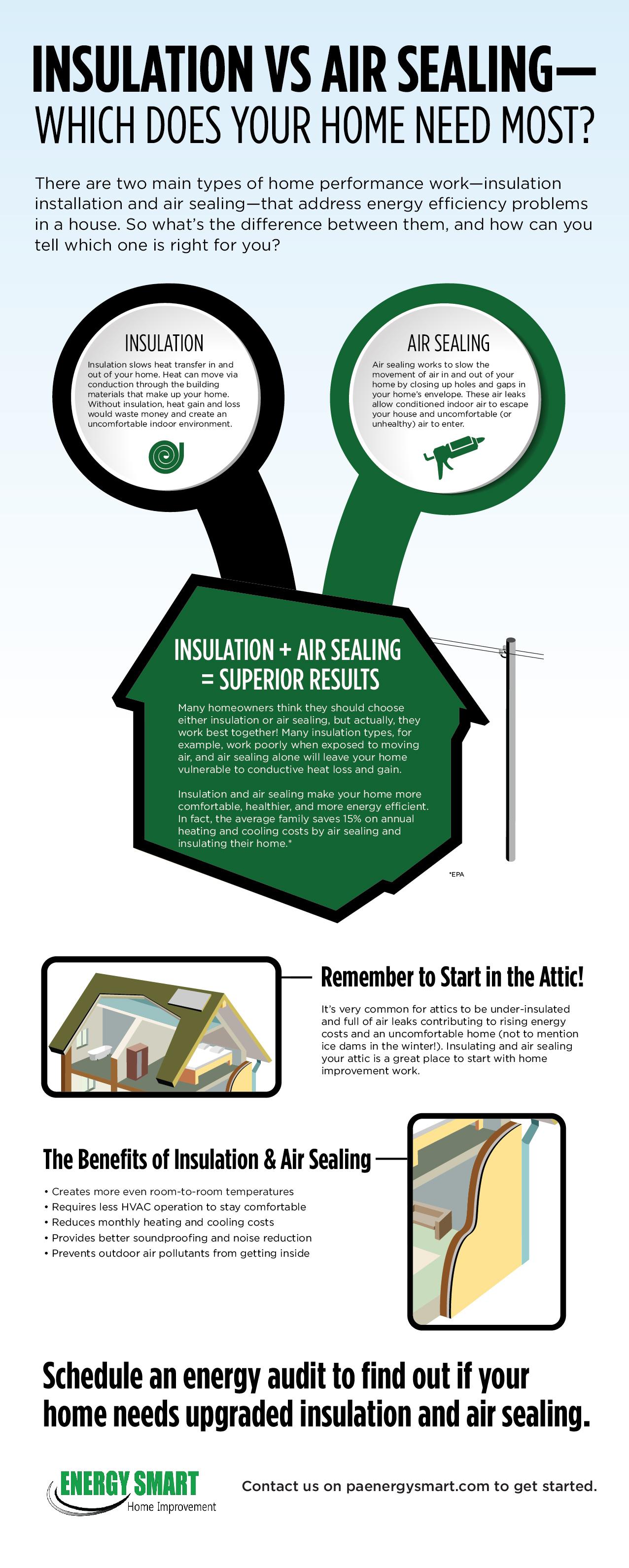

(View as a downloadable PDF version)
There are two main types of home performance work—insulation installation and air sealing—that address energ efficiency problems in a house. So what’s the difference between them, and how can you tell which one is right for you?
Insulation
Insulation slows heat transfer in and out of your home. Heat can move via conduction through the building materials that make up your home. Without insulation, heat gain and loss would waste money and create an uncomfortable indoor environment.
Air Sealing
Air sealing works to slow the movement of air in and out of your home by closing up holes and gaps in your home’s envelope. These air leaks allow conditioned indoor air to escape your house and uncomfortable (or unhealthy) air to enter.
Insulation + Air Sealing = Superior Results
Many homeowners think they should choose either insulation or air sealing, but actually, they work best together! Many insulation types, for example, work poorly when exposed to moving air, and air sealing alone will leave your home vulnerable to conductive heat loss and gain.
Insulation and air sealing make your home more comfortable, healthier, and more energy efficient. In fact, the average family saves 15% on annual heating and cooling costs by air sealing and insulating their home.*
*EPA
Remember to Start in the Attic!
It’s very common for attics to be under-insulated and full of air leaks contributing to rising energy costs and an uncomfortable home (not to mention ice dams in the winter!). Insulating and air sealing your attic is a great place to start with home improvement work.
The Benefits of Insulation & Air Sealing
Creates more even room-to-room temperatures
Requires less HVAC operation to stay comfortable
Reduces monthly heating and cooling costs
Provides better soundproofing and noise reduction
Prevents outdoor air pollutants from getting inside
